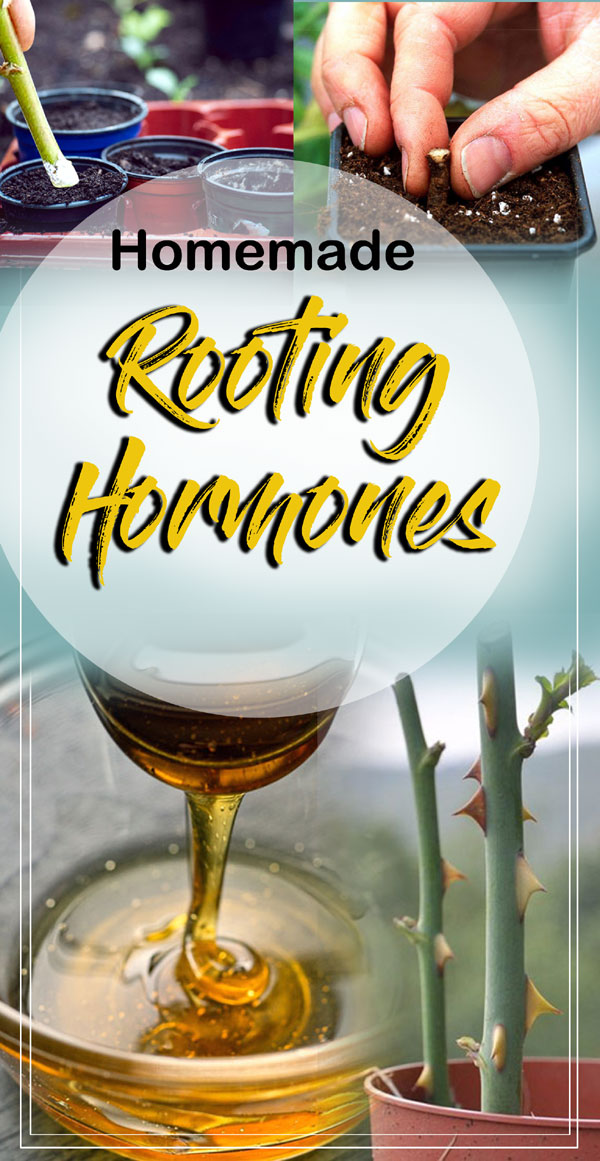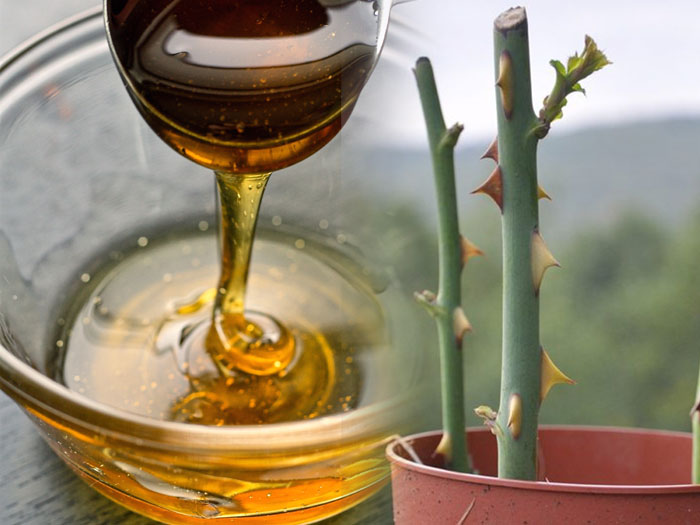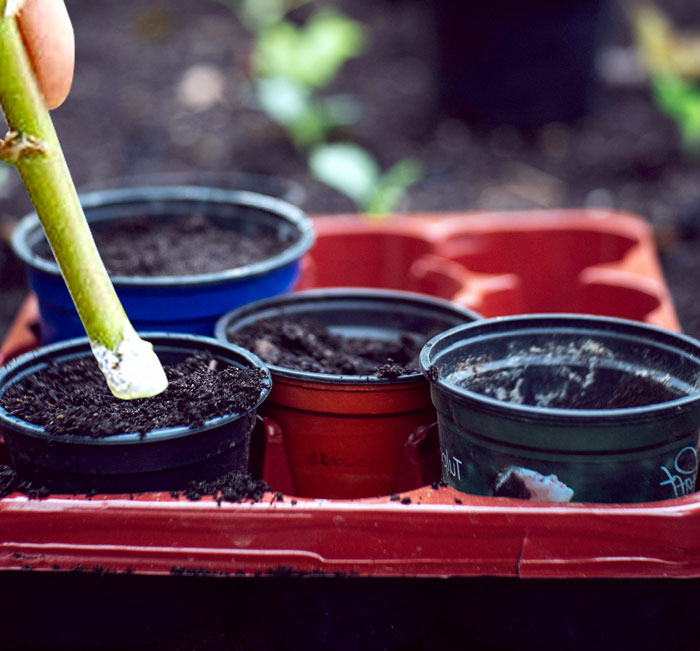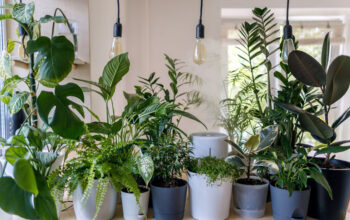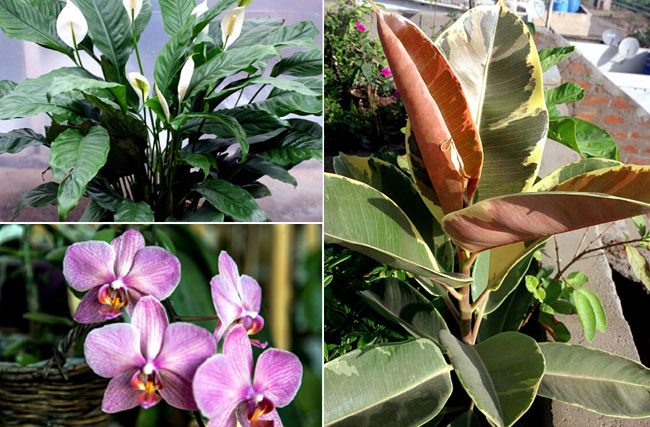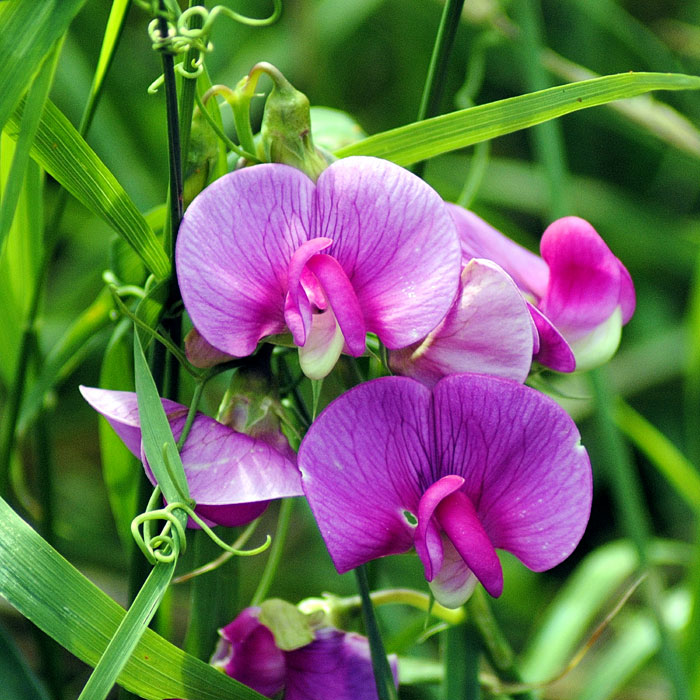Rooting Hormones ( Root stimulation)
Learn Homemade Rooting Hormones, Why use Rooting Hormones?, What is Root Hormone? and more about Rooting Hormone. natural rooting hormone i.e. root stimulant, which the gardeners use for cloning the plant. Cloning means developing new plants from cuttings. In horticulture, cloning means developing the Mother Plant by branch or stem cutting. This is an easy way to grow many plants from a mother plant, by which you can save many rare or precious varieties, as well as give plant gifts to your friends and neighbors.
However, most of the plants start growing roots naturally after some time after planting. Cloning can be easily by cutting in clear water under certain general rules.
Why use Rooting Hormones?
By the way, you can develop plants without using a rooting hormone, but most cuttings die and only a few plants grow. If you use root hormones, you can get 60-75 percent success.
What is Root Hormone?
When you develop new plant by cutting, there is the possibility of wounding during the cutting process, when cutting comes in contact with soil, it develops the fungal disease. Routing hormones act as a catalyst for new roots in cutting and prevents disease.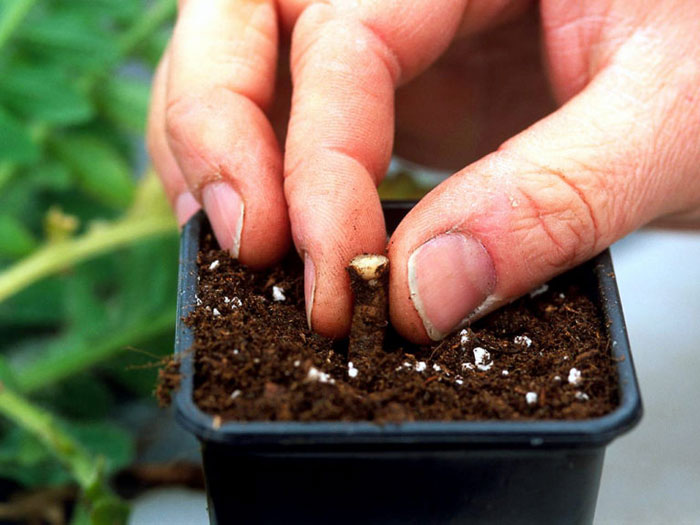
01. Cinnamon powder
If you are cutting a plant, then cinnamon powder acts as a root stimulation; do not use any chemicals to encourage the root. It is very easy, layer a little cinnamon powder on the lower surface of the cutting you want to apply, where the roots are encouraged, and plant it. This is a perfect solution, along with the saving of your money, you will avoid using chemicals. Read more.
02. Vinegar
You can use Apple Cider Vinegar as a natural rooting hormone. Vinegar commonly used in homes is for starting and spreading plants. This is an easy way through which you can grow new plants from your indoor and outdoor plants at a low cost. If you are going to grow a new plant from cuttings, then make a healthy start by dipping the root stimulation to the tip of the cutting, the percentage of success will increase. Many gardeners say that cutting can grow without rooting hormones, this is true, but it increases the chances of success. However some plants such as English ivy, pothos, etc. give root quickly without any help. Read more.
03. Honey natural rooting hormone
Honey can be used as a root stimulation. It is also commonly available in homes. Some gardeners say that honey contains enzymes that increase root stimulation in plants. Although its most useful property is a sanitizing agent, honey has antibacterial and anti-fungal properties, it can be used to give the cutting a healthy growing start. Dip the wounding portion of the cuttings in honey and place the cuttings to warm rooms after planting in the potting soil. Do not use too much honey, as it contains sugars and can have a repulsive effect. Further read.
04.Willow tree mixture
Willow Tree mixture kills stem tissue in excess of hormone concentrations. It helps in growing the roots naturally. Take thick willow branches and cut into 1-inch pieces. Use the chunks or smash the inner wood with a hammer. Now pour boiling water on the wood and leave it for at least 12 hours. Separate the willow chunks and fill the mixture into glass bottles. Willow rooting hormone is now ready. You can keep it in your refrigerator for 2 months. Before planting the cutting, dip the injured part in the Willow Tree mixture and leave it for a few hours and then apply it to the appropriate growing medium. Read more.
05. Hydrogen peroxide
It helps in the development of the root at any stage of the plant. If the amount of water is increased in a plant then it becomes easily a victim of Rood rot. Hydrogen peroxide rapidly going into the roots of plants, decomposes the soil, and solves its problem. Mix 3% hydrogen peroxide in gallon water, use this mixture as water in the plant once a week, Soak it to the root zone. It helps to increase the oxygen and help to the development of the root zone. Read more.
06 Non-Soil Mediums
The roots develop naturally when you plant rooted stems in soil-less media, which consists of a mixture of 2 parts peat moss and 1 part perlite, or 2 parts peat moss, 1 part perlite, and 1 part vermiculite. Alternatively, you place the cuttings directly in growing media and cover them with a clear plastic sheet to keep moisture inside. Allow the root ball to develop sufficiently before transplanting the plant.
07. Salicylic acid (SA)
People use Salicylic acid to treat pain and fever, it is also the plant hormone responsible for the rescue of the plant. Where there is a wound on one part of the plant, its use helps in internal protection in other parts of the plant, it prevents infection.
08.Aspirin
When you want to develop the cutting of a plant, it acts as a rooting hormone. To make routing hormones, take the pure water in the glass and pour a tablet of in it; it dissolves completely, then the plant which is to propagation, coat it on the lower surface of the cutting, and leave for some time. Plant it later. Read more.
Read also: How to use Hydrogen Peroxide. How to Propagateplants. Rose cutting Growing and caring. Aspirin in the garden. Grapes growing and care tips. Michelia Champaca growing guide. Growing Golden Barrel Cactus. Oregano growing and caring tips. Bleeding hearts flowers growing tips. Growing and care of Fittonia plants. Polka dot plant growing guide. Verbena growing and care guide. 6 Healing herbs you must grow in your garden. Garden phlox growing guide.
Happy Gardening
For Pin:
